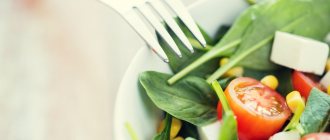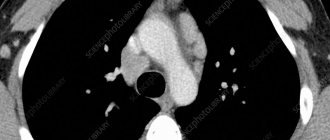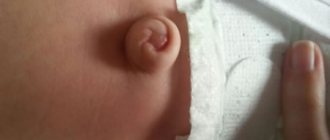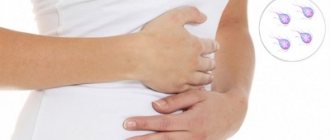All iLive content is reviewed by medical experts to ensure it is as accurate and factual as possible.
We have strict sourcing guidelines and only link to reputable sites, academic research institutions and, where possible, proven medical studies. Please note that the numbers in parentheses ([1], [2], etc.) are clickable links to such studies.
If you believe that any of our content is inaccurate, out of date, or otherwise questionable, please select it and press Ctrl + Enter.
Giardia are parasites. And it is this type of protozoan that is most difficult to identify. The patient can live for years experiencing only mild discomfort, without any significant symptoms. But giardiasis, both in adults and children, is dangerous due to its consequences. Giardia destroys the mucous membrane of the small intestine. Therefore, diet for giardiasis is extremely important; it is the basis for the treatment of this type of helminthiasis.
You can even say it differently - without a diet for giardiasis, treatment is doomed. With long-term giardiasis (several months), negative consequences appear such as indigestion, gastrointestinal inflammation (impaired defecation, dyskinesia, flatulence). It is sad that giardiasis is often accompanied by acute allergic reactions, impaired heart function and even upset nerves. Basic rules of hygiene and diet for giardiasis should speed up recovery.
If a person is diagnosed with giardiasis in a timely manner, then giardiasis can be defeated without using medications at all - armed only with patience and following a special diet for giardiasis.
The main thing in the diet for giardiasis is a categorical refusal of all foods that giardia loves, or in other words, food that is conducive to the reproduction and vital activity of giardia. An analysis of numerous studies on the topic of giardiasis shows that these parasites love carbohydrates. Let's consider different aspects of giardiasis and its treatment using a comprehensive method, using diet.
[1], [2], [3]
General information about giardiasis
The causative agent of the disease is a protozoan flagellated microorganism. When it enters the gastrointestinal tract, the parasite feeds at the expense of the host, releasing toxins during its life processes. Colonies of Giardia, located on the inner walls of the small intestine, disrupt the peristalsis of the organ and prevent the absorption of fats and carbohydrates. They can cause mechanical tissue damage, accompanied by microbleeding.
Causes
Infection of the body with a parasite occurs in the following cases:
The causative agent of giardiasis is a protozoan flagellated microorganism.
- When eating unwashed vegetables, fruits and berries.
- Failure to comply with personal hygiene rules (washing hands after visiting the toilet or public places).
- If contaminated water enters the stomach while swimming in natural bodies of water.
- In close contact with pets.
Giardia is also carried by insects: flies, mosquitoes, cockroaches, etc. Gardeners are at risk, since soil fertilized with manure contains a large number of parasite cysts.
Symptoms
The disease has 2 forms: acute and chronic.
Each of them is accompanied by a number of symptoms. Signs of acute giardiasis are:
- frequent attacks of pain in the lower abdomen and navel area;
- increased salivation;
- rumbling, flatulence, belching;
- nausea, sometimes vomiting;
- diarrhea or, conversely, constipation;
- the presence of mucus in the stool;
- feces acquire a light brown color due to their high fat content, the digestion process of which is blocked by harmful microorganisms;
- slight loss of body weight;
- fatigue, dizziness;
- loss of appetite.
Pain in the lower abdomen, nausea, fatigue are signs of giardiasis.
The chronic form of the disease is characterized by:
- Sharp weight loss (if left untreated, malnutrition may develop).
- Lack of appetite.
- Severe headaches.
- Development of colitis, cholecystitis.
- The appearance of a dense white coating on the tongue.
- Paleness of the skin (especially on the wings of the nose).
- The appearance of jams and microcracks on the lips, peeling of the skin around the mouth.
- Neurotic states: irritability, aggressiveness, apathy.
- Insomnia.
- Pain in the heart area.
- Allergic reactions: itching, redness of the skin.
Giardiasis is not always accompanied by pathological conditions. Under the influence of the immune system, parasite cysts do not transform into a vegetative form of existence. In such cases, the person is only a potential source of infection for others.
Vasilenko V.V. Giardiasis is seriously scary / www.gastroscan.ru. 2021
| Authors: Vasilenko V.V. |
Giardiasis is seriously scary
The material was prepared with the help of I. Kovalkova. Does the form with the results of the analysis, where Giardia is recorded in your child’s feces, prevent you from falling asleep at night?
Are you afraid of the serious treatment of this “illness”? Or have you been “treating” your child for these protozoa for several years without success? Then, first, you should clearly define what is meant by such a generalized medical concept as “giardiasis.” Does your child have characteristic signs of this disease or is everything limited to the presence of Giardia cysts in his stool?
The fact is that diagnosing giardiasis solely by stool analysis, paradoxically, is completely unfounded.
There are many medicines in medicine, but only the doctor’s skill can make them bring benefit. author unknown
What is Giardia?
First, a little lie.
It is generally accepted that Giardia is a parasite that can cause cholecystitis, and if it starts in the liver (scary to say!) - cirrhosis, and if the intestines are damaged - regular pain. In addition, they may cause nausea, vomiting, and everything in general.
A little history.
This simplest creature - a link in the evolution between bacteria and multicellular organisms - was described in 1681 by Leeuwenhoek, who observed it through a microscope he himself constructed and, not being a doctor or biologist, aptly called it an animacula (small animal). Dr. F. Lamblia from Prague (and not the Russian scientist D.F. Lambliy, as some believe) gave it a different name - cercomonas intestinalis, and Steels in 1915 renamed it in honor of F. Lamble and the Parisian professor A. Giardia as giardia lamblia. Nowadays it is more correct to call this flagellated protozoan “giardia intestinal” - giardia intestinalis (according to the proposal of the International Commission on Zoological Nomenclature).
Leeuwenhoek looked into the eyepiece of a simple microscope, and in turn, an animacula looked at him - a ghost-like creature, the size of which was slightly more than two times larger than a red blood cell - an erythrocyte (Fig. 16).
This is who Leeuwenhoek
Ris saw through his microscope.
16. Giardia lamblia Now, in continuation of the big truth. ... Small intestinal giardias are certainly parasites, but they are not particularly destructive compared to, for example, worms. They do not live at all in the gallbladder and bile ducts: once they get into the bile, they die immediately. Why should they cause cholecystitis?
The likelihood of liver cirrhosis in owners of Giardia is equal to the possibility of its occurrence in owners of lice, birthmarks and simply non-owners. Giardia cannot also cause severe disorders of the biliary system (cholecystocholangitis).
Everything is poison, and nothing is without poison;
Just one dose makes the poison invisible. Paracelsus Until now, official medicine has not published any cause-and-effect relationship between the presence of Giardia in humans and serious liver diseases, and the assumptions about the existence of this connection by individual doctors are nothing more than their personal opinion or “sacred tradition.”
It would be interesting to know: if bile is destructive for Giardia, how do they manage to harm the liver so much?
Finally, we got to the only organ in which these simple flagellates live - the small intestine.
Typically, giardiasis manifests itself as a simple parasite carriage, but there are also obvious forms - mainly in the form of disruption of intestinal activity. In these cases, the disease begins acutely 1–2 weeks after infection with fatty and loose stools (which can last up to three days) and sometimes pain in the epigastric region. This type of giardiasis does not cause complications. The prognosis is usually favorable.
Medicus amicus et servus aegrotorum est. — The doctor is the friend and servant of the sick.
Is it giardiasis?
Obviously, the source of knowledge about the presence of Giardia in your child, naturally, was stool tests.
The only question is what was the reason for the examination - quite possibly, one of the following circumstances. >
- The child has periodic abdominal pain, sometimes does not feel well, and spontaneous vomiting occurs.
With such symptoms, most likely there are problems with the digestive tract or with the nervous system (the same psychological situation!).
It is advisable to consult a good doctor, who will determine the true cause of the ailment, and not attribute everything to Giardia in the feces.
- Your pediatrician advised you to get tested for Giardia, since the child looks “thin”, although he has a good appetite, and you have no other complaints.
If we suspect giardiasis in every healthy child, thin or, as our grandmothers said, “lean” in build, then with the same reason we should suspect a congenital metabolic disorder in all plump children. Some are thin, others are plump, some are tall, some are short - children simply have different appetites, each of them has a unique gene set, some are athletic and active, others prefer a more measured pace of life.
All this is reflected in their constitution. Of course, the main indicator that everything is in order is the child’s good health and normal development, and raising suspicions based on the general impression and one’s own ideas about what a healthy child “should” look like is, to say the least, not entirely correct.
- You yourself decided to get tested for prevention, since the child has a habit of biting his nails, digging in the ground (sand), sucking a pencil, etc.
Prevention is, of course, a necessary thing, if by it we mean hardening the child, good nutrition, sufficient exposure to fresh air and observing basic hygiene measures, and not at all the habit of donating blood, urine or feces (as in this case) for tests “just in case.” case” - you see, they’ll find something. Absolutely, you will do more harm to your child than good if you live in anticipation of some kind of illness.
- The child has problems with the biliary system, and the doctor, unsuccessfully trying to cope with them, decided that giardiasis was to blame
(by the way, the most popular hypothesis after “bends of the gallbladder”).
They don’t live in the gallbladder, they don’t! Even with duodenal intubation, when Giardia is removed from the duodenum, they are often in a very poor condition. And there’s nothing to say about the gallbladder! Draw a parallel between the two simple premises given above, and you will come to a simple conclusion that there cannot be living Giardia in the gallbladder bile.
- The child suffers from frequent acute respiratory diseases, colds, etc., and the doctor recommended a stool test for giardiasis.
It can be assumed that when sending for analysis, a complex scheme was implied in which Giardia harms the intestines and directly or indirectly leads to a weakened immune system.
If Giardia had such an effect on the protective processes in the body, immunologists, not pediatricians, would take them seriously. In this situation, Giardia doesn’t even have anything else to attach to. The severity of the disease (giardiasis) has nothing to do with immunity: it is known that in patients with immunodeficiency syndrome, giardiasis does not worsen and does not transform into threatening forms. This indicates that our immune system is absolutely indifferent to them, or at least does not consider Giardia to be its enemies.
In addition, Giardia does not produce toxins.
Medicine can do more than it knows. F. Bacon
- Attacks of “acetonemic vomiting” in a child, possible provocateurs of which are Giardia.
Not a single serious medical book has covered this issue.
Why then invent this dependence for those who do not write or read these books? Treatment must be based on scientific facts, and not on shaky assumptions. And know what periodic vomiting syndrome, which was described above, is.
- The child has skin problems, and you attribute their causes to problems in the digestive tract.
The skin is the diocese of dermatologists, and you can turn to them.
However, not to those who suggest starting a search for harmless Giardia. Remember, even if you undergo the necessary treatment and eradicate these protozoa from yourself, this will not guarantee a solution to your skin problems.
Nevertheless, it is likely that after taking strong antibacterial drugs there will be an improvement, since through the blood these drugs act on various pathogens directly in the skin. And Giardia has nothing to do with it.
Philosophers deserve the title of anatomists more than doctors: they open, but do not heal. A. Rivarol
As you can see, none of the points has absolutely nothing to do with lamblia itself.
Is it worth fighting flagellar “monsters”?
In North America, where they know how to count money, two main positions compete with regard to Giardia in children. The first is that it should not be treated if there are no outbreaks of acute gastroenteritis in children's groups, the second is that it should not be treated at all, since this will not reduce the level of morbidity (and infection).
In principle, Giardia does not cause a person any particular inconvenience. Almost 30% of the world's inhabitants are their latent carriers. Many people don’t even know about it - at least until doctors start to panic. For some reason, some doctors have the habit of “chasing Giardia” for various disorders, although the only officially recognized disease that occurs when there is an excess of Giardia in the duodenum is Giardia enteropathy.
By the way, this disease is characterized as diarrhea, which usually goes away on its own within a few days.
And the wise Voltaire doubted the toxicity of coffee. Kozma Prutkov
According to infectious disease specialists and epidemiologists, giardiasis can be suspected when diarrhea appears, especially in children, without pronounced manifestations of general intoxication in the absence of mucus and blood in the stool. Until the mid-1960s, the question that Giardia can cause weak stools generally remained controversial: researchers were confused by the colossal predominance of asymptomatic Giardia carriers among those examined.
To be fair, it is worth noting that chronic giardiasis enteritis also occurs, but the reason for its chronicity has not yet been sufficiently studied.
More precisely, it cannot be called enteritis (inflammation of the intestines), because there is no inflammation.
Of course, if you wish, you can remove Giardia from the body. If you still set this goal, then first study the annotations of such drugs as, for example, trichopolum (metronidazole), tiberal (ornidazole) and furazolidone.
And if you don’t get the impression that you are “shooting sparrows with a cannon” when using such therapy for simple parasite carriers, then in this case you can only be glad that you are not a doctor and therefore would not recommend this to others.
I am sure that the principle of rational drug treatment in pediatric gastroenterology is the rule: the absence of a compelling indication is a contraindication to prescribing the drug.
V.V. Vasilenko. Sixty essays on digestion (recommendations from a gastroenterologist to patients) Back to section
Features of treating disease with diets
The purpose of dietary nutrition is to supply the body with vitamins, minerals and other useful substances that are missing as a result of a malfunction of the gastrointestinal tract, as well as to create the necessary microflora for the death of parasites in the intestines.
Foods that are sources of fast carbohydrates are excluded from the diet. Dishes are prepared by boiling or baking foods. The number of meals should be increased to 5-6 times a day.
Advantages
In the early stages of the disease, diet will help cope with parasites without the use of drugs.
In addition, taking a large number of medications causes mass death of helminths, which leads to poisoning by their decay products. Dietary nutrition helps to gradually destroy Giardia without causing an acute reaction in the body. The diet does not include the consumption of expensive foods, since the main sources of nutrition are cereals, fruits and vegetables.
Cereals and vegetables are the most important part of the diet for giardiasis.
Basic principles of nutrition
The principles of nutrition for patients with giardiasis are based on creating unfavorable conditions for the life of helminths. It is necessary to adjust the usual diet taking into account the following requirements:
- Limit your intake of carbohydrates that are quickly absorbed by the body.
- Increase the acidity level in the stomach.
- Prepare dishes by boiling or baking foods.
- Eliminate dairy products from the menu.
Children
Parents of sick children need to ensure that all products included in the recommended list are present in the weekly menu.
It is necessary to diversify the child’s diet as much as possible so that the body is saturated with nutrients (vitamins, minerals) in sufficient quantities.
Adults
Adults should adhere to the general principles of nutrition for giardiasis.
Preventing relapses of giardiasis
There are no known pharmacological agents that effectively prevent relapse of giardiasis. Reinfection often occurs in endemic areas or in situations where hygiene levels are poor or contaminated water (such as private wells) is not properly treated. Re-infection can be prevented by consistent hand hygiene, especially after bowel movements and handling soiled diapers. You should also practice hand hygiene before preparing and eating food. To reduce the risk of disease transmission, children with diarrhea should be removed from childcare settings until the diarrhea stops. Children with giardiasis should not go to recreational water facilities for 2 weeks after the symptoms disappear.
Types of diets
Nutritionists have developed dozens of different diets that help cope with the disease. But the most effective are the Mediterranean diet and the Pevzner diet plan.
Mediterranean
The traditional Mediterranean diet includes the following foods:
- vegetables, fruits, herbs and berries;
- olive oil;
- cereals;
- legumes;
- lean meat and fish;
- seafood.
Seafood is a component of the Mediterranean diet for giardiasis.
The main beneficial components are vegetable protein and fiber, which saturate the body with vitamins and microelements. Reduced consumption of fats, which are the main source of nutrition for parasites, provides an unfavorable environment for the development and reproduction of helminths.
Read also:
Mediterranean diet: features and benefits, rules
697 — Rating: no ratings
The Mediterranean diet is a balanced and healthy diet that has no contraindications and is not harmful to health. The technique is a collection of nutritional principles...
According to Pevzner
In adults, Giardia can parasitize not only in the small intestine, but also in the bile ducts.
Therefore, patients with this diagnosis are prescribed the Pevzner diet, which was originally developed for people with severe damage to the liver and pancreas. According to the Pevzner diet, patients are recommended the following BZHU ratio: 100:80:400. Products are consumed boiled, stewed, baked. The food is finely ground and the dishes are served slightly cooled. You need to eat 5 times a day.
For children
Giardiasis in children especially often occurs against the background of allergization of the body and immunosuppression , which clinically manifests itself most often in the form of urticaria and atopic dermatitis . Therefore, dietary nutrition in such cases is adjusted, and along with the treatment of giardiasis, a hypoallergenic diet . In the intestinal form, the diet for children is similar to the diet for adults, taking into account the child’s age. The diet for giardiasis in children must be supplemented with probiotics .
When treating Giardia in children of the first year of life who are breastfed, it is recommended to reduce (by about 1/3) the amount of food taken (milk, adapted formula). Feeding should be dosed in accordance with the meal schedule. If a child is infected with giardiasis from the mother, the child is gradually transferred to artificial feeding, and simultaneous treatment is carried out for mother and child.
Allowed foods
A gentle diet for patients with giardiasis involves consuming the following food groups:
- Fruits: tangerines, lemons, oranges, apples, pineapples, grapefruits, pomegranates.
- Mushrooms: chanterelles (can be dried).
- Greens and vegetables: radishes, broccoli, peas, beans, onions, beets, cauliflower, pumpkin, spinach, tomatoes, radishes, garlic, sorrel.
- Fermented milk products: yogurt, kefir, yogurt, low-fat cottage cheese and sour cream, fermented baked milk.
- Meat: rabbit, chicken, turkey, veal.
- Cereals: buckwheat, oatmeal, pearl barley, millet.
- Fish: pike, cod, pike perch.
- Seafood.
- Oils: olive, linseed, butter.
- Natural honey.
- Drinks: green tea, mineral water, compotes and fruit drinks from fresh berries, beet and carrot juices, jelly.
- Berries: cranberries, black and red currants, viburnum, cherries, lingonberries.
- Pickles, such as sauerkraut.
- Nuts (almonds).
- Chicken eggs.
Prohibited for use
Patients with giardiasis will have to partially limit or completely exclude from the diet (depending on the degree of pathology) a number of products:
- Vegetable preparations: canned tomatoes and cucumbers.
- Fruits: apricots, bananas, pears, melon, figs, watermelon, avocados, plums.
- Fresh berries: strawberries and grapes.
- Dried fruits: apricots, dates, dried apricots.
- Cereals: wheat and rice.
- Jam, jam, jelly.
- Chocolate.
- Store-bought sauces and seasonings: mayonnaise, ketchup, mustard, horseradish, adjika.
- Dairy products: milk, cream.
- Meat: pork, lamb.
- Smoked products: ham, sausage.
- Fatty fish, as well as canned food, caviar.
- Pork fat.
- Carbonated drinks.
- Black tea, coffee.
- Alcohol.
Fully or partially limited products
With giardiasis, all concentrated broths (fish, meat, mushroom) are excluded from the diet. The consumption of fatty, smoked meat, pickled, salted, fried foods, canned fish and meat and semi-finished products is not allowed. Products containing easily digestible carbohydrates are limited - honey, sugar, jam, jam, sweets, confectionery, yeast baked goods. Dried fruits and sweet fruits are not allowed. Products with preservatives and artificial colors are not allowed in the diet. Sweet juices, strong coffee, kvass, sweet carbonated and alcohol-containing drinks are excluded from drinks.
Table of prohibited products
| Proteins, g | Fats, g | Carbohydrates, g | Calories, kcal | |
Vegetables and greens | ||||
| canned vegetables | 1,5 | 0,2 | 5,5 | 30 |
| canned cucumbers | 2,8 | 0,0 | 1,3 | 16 |
| pickles | 0,8 | 0,1 | 1,7 | 11 |
| canned tomatoes | 1,1 | 0,1 | 3,5 | 20 |
Fruits | ||||
| apricots | 0,9 | 0,1 | 10,8 | 41 |
| avocado | 2,0 | 20,0 | 7,4 | 208 |
| watermelon | 0,6 | 0,1 | 5,8 | 25 |
| bananas | 1,5 | 0,2 | 21,8 | 95 |
| pears | 0,4 | 0,3 | 10,9 | 42 |
| melon | 0,6 | 0,3 | 7,4 | 33 |
| figs | 0,7 | 0,2 | 13,7 | 49 |
| plums | 0,8 | 0,3 | 9,6 | 42 |
Berries | ||||
| grape | 0,6 | 0,2 | 16,8 | 65 |
| strawberry | 0,8 | 0,4 | 7,5 | 41 |
Nuts and dried fruits | ||||
| dried apricots | 5,2 | 0,3 | 51,0 | 215 |
| dried apricots | 5,0 | 0,4 | 50,6 | 213 |
| dates | 2,5 | 0,5 | 69,2 | 274 |
Cereals and porridges | ||||
| Wheat groats | 11,5 | 1,3 | 62,0 | 316 |
| white rice | 6,7 | 0,7 | 78,9 | 344 |
Confectionery | ||||
| jam | 0,3 | 0,2 | 63,0 | 263 |
| jelly | 2,7 | 0,0 | 17,9 | 79 |
Chocolate | ||||
| chocolate | 5,4 | 35,3 | 56,5 | 544 |
Raw materials and seasonings | ||||
| brewer's yeast | 12,7 | 2,7 | 0,0 | 75 |
| mayonnaise | 2,4 | 67,0 | 3,9 | 627 |
| sugar | 0,0 | 0,0 | 99,7 | 398 |
Dairy | ||||
| milk | 3,2 | 3,6 | 4,8 | 64 |
| cream | 2,8 | 20,0 | 3,7 | 205 |
Meat products | ||||
| pork | 16,0 | 21,6 | 0,0 | 259 |
Bird | ||||
| smoked chicken | 27,5 | 8,2 | 0,0 | 184 |
| duck | 16,5 | 61,2 | 0,0 | 346 |
| smoked duck | 19,0 | 28,4 | 0,0 | 337 |
| goose | 16,1 | 33,3 | 0,0 | 364 |
Fish and seafood | ||||
| dried fish | 17,5 | 4,6 | 0,0 | 139 |
| smoked fish | 26,8 | 9,9 | 0,0 | 196 |
| black caviar | 28,0 | 9,7 | 0,0 | 203 |
| canned fish | 17,5 | 2,0 | 0,0 | 88 |
Oils and fats | ||||
| animal fat | 0,0 | 99,7 | 0,0 | 897 |
| cooking fat | 0,0 | 99,7 | 0,0 | 897 |
Non-alcoholic drinks | ||||
| cola | 0,0 | 0,0 | 10,4 | 42 |
| coffee | 0,2 | 0,0 | 0,3 | 2 |
| lemonade | 0,0 | 0,0 | 6,4 | 26 |
| Pepsi | 0,0 | 0,0 | 8,7 | 38 |
| sprite | 0,1 | 0,0 | 7,0 | 29 |
| black tea | 20,0 | 5,1 | 6,9 | 152 |
| * data is per 100 g of product | ||||
Approximate weekly menu
Some people find it difficult to adjust their usual diet taking into account all the dietary requirements, so doctors advise using an approximate weekly menu.
Monday
| 1st breakfast | Oatmeal with water, green tea |
| 2nd breakfast | Carrot and apple salad |
| Dinner | Bean soup, boiled chicken, mashed potatoes, orange compote |
| Afternoon snack | Low-fat cottage cheese, green tea with lemon |
| Dinner | Boiled fish, fresh tomato salad with olive oil |
Tuesday
| 1st breakfast | Low-fat yogurt, apple, tea |
| 2nd breakfast | Orange or grapefruit |
| Dinner | Millet porridge, baked veal, beet salad, cranberry juice |
| Afternoon snack | Kefir, bran bread |
| Dinner | Roast turkey, carrot salad |
Wednesday
| 1st breakfast | Oatmeal porridge with honey, green tea |
| 2nd breakfast | Tomato juice |
| Dinner | Pea soup, stewed beef with vegetables, lingonberry jelly |
| Afternoon snack | Ryazhenka |
| Dinner | Baked fish with cheese, cauliflower salad |
Thursday
| 1st breakfast | Semolina porridge, green tea |
| 2nd breakfast | Low-fat cottage cheese, pomegranate |
| Dinner | Sauerkraut cabbage soup, stewed rabbit meat, buckwheat porridge, apple compote |
| Afternoon snack | Tomato and cucumber salad with low-fat sour cream, rosehip infusion |
| Dinner | Boiled shrimp or squid, kefir |
Friday
| 1st breakfast | Bran bread, boiled egg, green tea |
| 2nd breakfast | Grapefruit or pineapple, cranberry juice |
| Dinner | Mushroom soup, boiled chicken meat, vegetable stew, carrot juice |
| Afternoon snack | Cottage cheese casserole with fresh berries |
| Dinner | Boiled fish, green pea and boiled potato salad with olive oil |
Saturday
| 1st breakfast | Buckwheat porridge, rosehip decoction |
| 2nd breakfast | Low-fat yogurt, orange |
| Dinner | Stewed beef, mashed potatoes, tomato salad, jelly |
| Afternoon snack | Kefir, apple |
| Dinner | Boiled fish, radish salad with low-fat sour cream |
Sunday
| 1st breakfast | Low-fat cottage cheese, tea with lemon |
| 2nd breakfast | Kiwi |
| Dinner | Sorrel and spinach cabbage soup, boiled pork, pearl barley porridge, tomato salad with olive oil, cherry or currant compote |
| Afternoon snack | Boiled shrimp, tomato juice |
| Dinner | Steamed fish cutlets, mashed potatoes, vinaigrette, kefir |
Useful recipes for therapeutic and preventive diet
Do not despair if, according to diet requirements, you have to exclude your favorite dishes from the menu. The list of foods allowed for consumption is extensive, so you can experiment with the ingredients and method of preparation.
First meal
The first course must be on the lunch menu.
During treatment, it is better for patients with giardiasis to give preference to vegetable soups. To prepare dietary cabbage soup you will need the following products:
- tomatoes - 2 pcs.;
- onions - 3 pcs.;
- bell pepper - 1 pc.;
- carrots - 1 pc.;
- cabbage - 0.5 heads;
- dill and celery greens - to taste;
- bay leaf, pepper, salt.
Preparation:
- Place a pot of water on the fire.
- Finely chop the cabbage.
- Peel carrots, peppers, onions.
- Cut all vegetables into cubes.
- Place cabbage and carrots in boiling water and cook for 7 minutes.
- Add tomatoes, peppers and onions.
- Cook until vegetables are soft.
- Sprinkle the finished dish with herbs.
Nutritionists advise eating sauerkraut once a week to increase acidity in the body.
Dietary cabbage soup (vegetable) for giardiasis.
Making cabbage soup from sauerkraut is quick and easy:
- Pour 2 liters of water into a saucepan and place on the stove.
- Cut the onion (1 pc.) into half rings, grate the carrots (1 pc.) coarsely.
- Pour 2 tbsp into the pan. olive oil, add carrots and onions, add sauerkraut (250 g).
- Cover the pan with a lid and simmer the vegetables over low heat for 10 minutes.
- Peeled, washed and cut into strips potatoes (3 pcs.) Place in boiling water.
- After 5 minutes, add the contents of the pan to the pan.
- Salt and pepper the cabbage soup and boil for another 10 minutes. Before serving, garnish with herbs.
Second
From permitted products you can prepare delicious chicken fillet baked in foil. For the dish you will need the following ingredients:
- chicken fillet - 2 pcs.;
- tomatoes - 2 pcs.;
- low-fat sour cream - 2 tbsp;
- garlic - 1 clove;
- seasonings and salt - to taste.
Baked breast fillet with tomatoes and sour cream is a delicious dish for giardiasis.
Preparation:
- Make several shallow cuts on the surface of the fillet.
- In a deep bowl, mix sour cream and garlic passed through a press.
- Salt and pepper the meat and brush with sour cream mixture on all sides. Make sure that the mixture flows into the cuts.
- Leave the fillet for 15-20 minutes to soak.
- Place tomatoes cut into half rings on the surface of the fillet.
- Wrap the pieces of meat in foil, place on a dry baking sheet and put in the oven for half an hour.
You can cook turkey and beef in the same way.
Salads
Salads made from fresh or boiled vegetables seasoned with olive oil are suitable for dietary nutrition. For example, take an arbitrary amount of cabbage, carrots and apples. Finely chop all the ingredients, mix, sprinkle lemon juice on top and pour over linseed or olive oil.
Another recipe for a juicy and nutritious salad: squid carcass, pink radishes, boiled eggs, cut a green apple into cubes and season with olive oil. The proportions of the components are arbitrary.
Beverages
You can prepare fruit drinks, compotes and jelly from any fresh berries.
Smoothies with fruit additives have become especially popular. To prepare the drink you will need:
- kefir - 1 tbsp.;
- apples - 2 pcs.;
- cinnamon;
- honey;
- mint.
Grind the apples in a blender, pour kefir into the puree, add honey, cinnamon and a sprig of mint (optional). Beat everything again until foam forms.
Apple smoothie is a healthy drink for giardiasis.
Dessert
Dietary nutrition does not exclude the consumption of desserts.
Treats are prepared only from natural products, and sugar in recipes should be replaced with honey. You can, for example, use a frozen yogurt recipe. For the dish you will need:
- low-fat fermented milk product - 1 l;
- any fresh berries or fruits - to taste;
- honey - 2 tbsp;
- vanillin.
Mix all ingredients, beat, pour into molds and place in the freezer for 2-3 hours.
Dietary oatmeal cookies are made from rolled oatmeal and low-fat cottage cheese, which fully replaces flour and holds together the dough components. In addition to the main products, an egg and puree of berries and fruits are added to the preparation. Next, you need to sweeten the dough with honey, knead well, form cookies and bake in the oven.
Recipes for giardiasis
Below are some special recipes for preparing dishes recommended for the formation of an acidic environment for giardiasis.
Drink of lingonberries and cranberries
Grind fresh or frozen (previously defrosted) lingonberries/cranberries in a meat grinder until pureed. Place in a deep saucepan, combine the mixture with sugar and add clean water, boil and let sit for 20-30 minutes. Cool the finished fruit drink and strain.
Compote of oranges and lemon
Wash 1-2 sweet oranges and 1 lemon, remove the zest and peel the skin. Thinly slice the zest into strips, place in a bowl, add hot water and leave for a few minutes, place in a colander and let the water drain. Pour sugar and zest into boiling water. Boil for 3 minutes and let cool. Cut the orange and lemon pulp into slices and place in a saucepan. Let's brew. The drink is served chilled.
Results and reviews
Marina, 24 years old, Yekaterinburg At the age of 22, I was diagnosed with giardiasis.
During this period, I studied at the university and lived in a dormitory. There I became infected with protozoa. The doctor prescribed several types of drugs. But after a week of taking it, I felt very tired and constantly dizzy. I decided to change my diet and used the Pevzner diet. After just 2 days, my health improved, and after another 10 days, tests showed the absence of parasites. In addition, proper nutrition helped me lose an extra 5 kg. Ekaterina, 31 years old, Samara My son suffered from giardiasis 3 times. In all cases, the disease was quickly managed with the help of medications and diet. I believe that without adjusting the diet, the treatment would have been longer.
Diagnosis of giardiasis in children and adults
The most informative methods for diagnosing giardiasis are laboratory research methods:
- scatological examination - when examining stool under a microscope, giardiasis cysts are found in it;
- examination of the contents of the duodenum - when studying it, vegetative, active forms of Giardia are revealed;
- serological diagnosis (the so-called blood test for giardiasis) - 12-14 days after infection, specific antibodies are detected in the blood.









